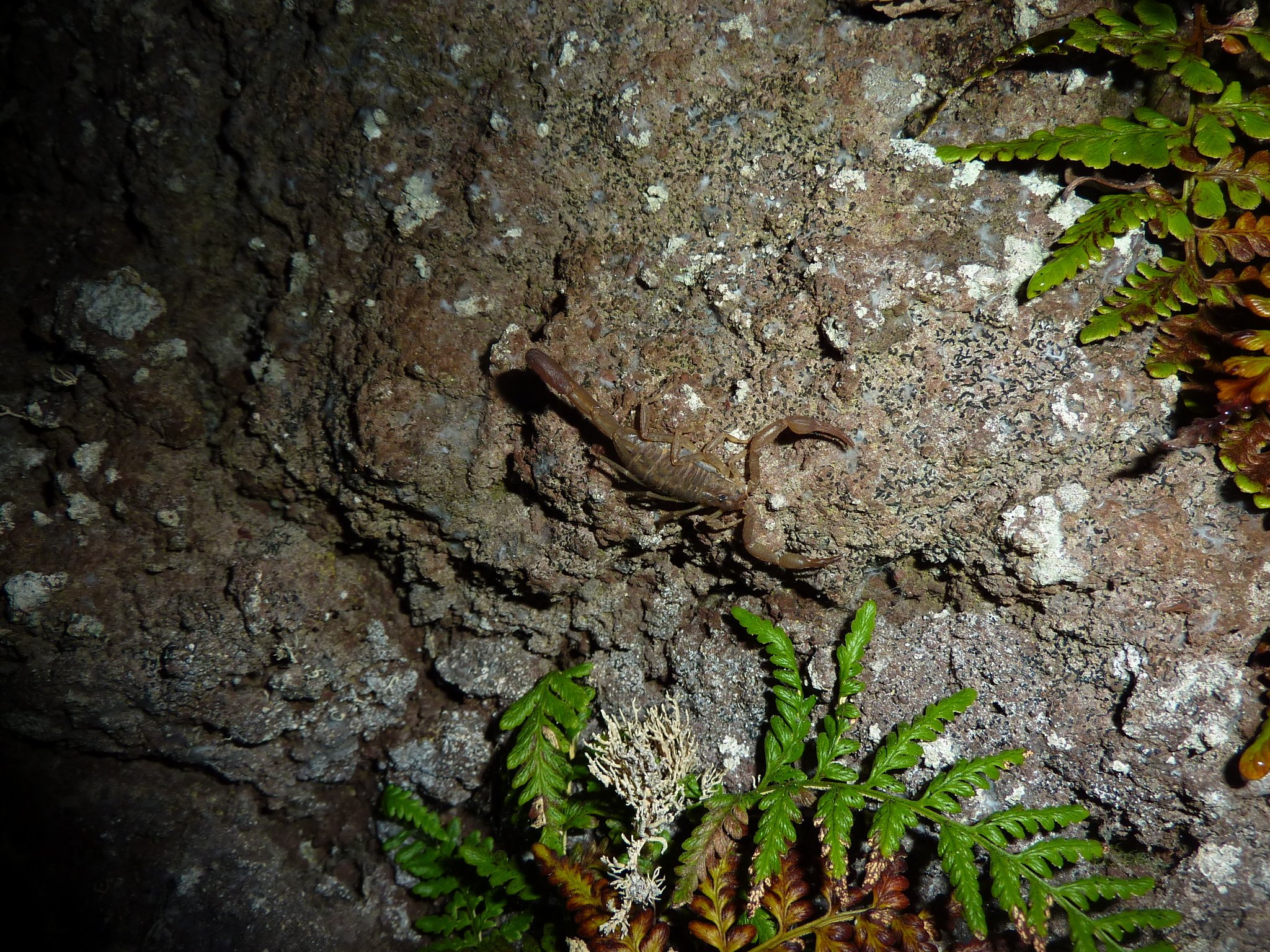On Land: Arachnids
Scorpion
Centruroides barbudensis
Jumplinks:
About
Scorpions live on every continent except Antarctica and in nearly every habitat on Earth — and Saba’s no exception. There are two species of scorpion on the island, neither of which have common names. If you’re struggling with this one, try saying it out loud: sent-tur-oy-dees bar-boo-den-sis. (There you go.)
Centruroides barbudensis is far more likely to run away from you than try to defend itself, and won’t sting humans unless disturbed and left with no other option, so be sure to treat these timid arachnids with respect. (Their venom is non-lethal to humans, but an allergic reaction is always possible.) While easy to fear, scorpions in fact deserve our love and admiration for the role they play in ecosystems, and in human lives. They’re not only important pest-controllers — eating insects, spiders, and even other scorpions — but peptides from their venom is a key ingredient in a range of antibiotic, immunoregulatory, and antiviral medicines.
If you want to observe this species, wait for the sun to go down and try a night hike — that’s when Centruroides barbudensis is most active, and they can often be found hiding along rocks and tree trunks in areas with dense leaf litter. You may struggle to catch a glimpse of one of these well-camouflaged scorpions using a regular flashlight, which is why pros along bring a UV light. In ultraviolet light, these scorpions glow a beautiful and unforgettable bright blue.
Header image by @martijn_terpstra (CC-BY-NC).
This species is:
Native
Why that matters:
Native species are those that evolved in the region naturally, without human influence. That means they’re specifically adapted to Saba’s habitat, and play a key role in island biodiversity. When we lose native species, gaps appear in the ecosystem. That leads to cascades of additional extinctions, and to the loss of the ecosystem services (food, clean air and water, flood and coastal protections, and more) that we humans rely on.
iNaturalist Observations
Where locals, researchers, and visitors have seen this species.
Google / Imagery © 2023 CNES / Airbus, Landsat / Copernicus, Maxar Technologies, U.S. Geological Survey, iNaturalist Map data @2023
This map shows geotagged observations of this species made on iNaturalist, the world’s largest community-science platform.
iNat depends on people like you. By uploading photos of species you see in the wild, you can easily learn more about them — while also contributing critical data used by scientists and conservation-managers around the globe.
See something odd?
Observations of land species in water:
Connectivity can affect how accurate location services are, and in the case of endangered species, location is often automatically obscured.Missing observations:
Your help is needed to collect more data for this species!
Ask a Scientist
Question: Scorpions are the main focus of your work — what are some of your favorite facts about them?
Answer: My favorite thing about scorpions has to be that they give birth to live young and then take care of those babies until they’re old enough to venture out on their own. I think it’s just so unexpected from an animal with a reputation for being dangerous. I also think it’s super interesting that they’re one of the oldest predators on land — their ancestors moved onto land from the ocean over 430 million years ago! And last, I can’t ever get over the fact that when mating, scorpions engage in a courtship dance that begins with them facing one another and holding hands.
Dr. Lauren Esposito
Curator of Arachnology and Islands 2030 Co-Director, California Academy of Sciences
Related Content
Silver garden orbweaver
On Land: Arachnids
Caribbean land hermit crab
On Land: Crustaceans









